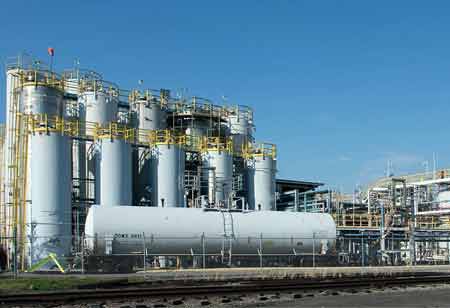Some of the crucial challenges of the chemical supply chain are the lack of visibility, coordinating the delivery of materials, optimization of load, and circular economy support.
FREMONT, CA: One of the most important industries in the world is the chemical industry. It is essential for this industry to maintain a tight ship with a chemical supply chain that includes chemical manufacturing and chemical distribution. It is challenging to keep operations smoothly running when there are many moving parts and many stakeholders - including chemical manufacturers, distributors, retailers, and consumers.
In the past few decades, chemical supply chains have evolved and adopted new digital technologies. Companies are using artificial intelligence (AI) tools for everything from chemical production optimization to chemical allocation management, risk assessment, and risk mitigation to inventory control. Supply chain management is already being revolutionized by AI. AI can optimize performance across all levels of the chemical supply chain to improve performance and increase profits while protecting human health and the environment. Chemical suppliers can leverage AI to manage their supply chains.
A look at the challenges of the chemical supply chain and how AI can help: On the surface, the chemical industry appears to be doing well. Earnings and revenues have increased. However, there are hidden pressures building beneath the surface. Some of the challenges of the chemical supply chain are as follows:
Production planning: It takes many steps to manufacture chemicals, so chemical suppliers must carefully plan their production.
Chemical producers rely heavily on enterprise resource planning (ERP) systems to manage all of this complexity efficiently. ERPs still struggle to keep up with the often rapid changes in chemical manufacturing without AI enhancements.
With advanced analytics and AI-enhanced chemical supply chain management, chemical suppliers can optimize planning production schedules, respond to market changes, and meet customer demands intelligently, tailoring chemical needs to optimize performance across all levels of the supply chain.
Optimization of load: Another challenge in the chemical supply chain is optimizing truck loadings. Chemical companies often use a just-in-time (JIT) inventory system, which makes load optimization difficult. In order to fill a truck with their product orders, chemical manufacturers must consider the number of products needed for each customer and the weight restrictions and ADRs sometimes imposed by shipping carriers. When possible, bulk shipments should be planned to reduce shipping costs and increase chemical efficiency.
AI can be used to manage inventory and optimize shipment loadings. With AI, chemical supply chains can optimize production and logistics by finding new insights.
Circular economy support: AI can help chemical companies reduce chemical waste by increasing recycling efforts, which is part of the circular economy. Consequently, chemical suppliers can recover more raw materials from chemical products before they are thrown away or disposed of in landfills, reducing their carbon footprint and environmental impact.
AI solutions are helping to recycle chemical products by analyzing chemical recipes and identifying areas where chemical recycling can be cost-effective. As a result of AI, chemical companies can also identify opportunities to use recycled chemicals as raw materials, which not only reduces environmental impact but also saves them money.

